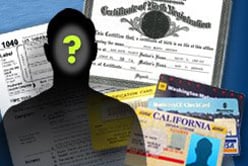1. Federal Court Says "Aloha" to Hotel Service Charge Practices in Hawaii
2. OSHA Spotlight: OSHA Hitting Hard on "Repeat" Penalties at National Chains, and Ergonomics (Housekeepers, etc.) Are Back in Play
3. ADA Title III News: Boston Area Hotels Under Investigation; March 15, 2012 Deadline For Compliance With Revised ADA Accessibility Standards Nears; The Latest Updates On DOJ Rulemaking Over Website Accessibility, Equipment And Furniture
4. IRS Guidance Makes 2014 Hospitality Employer Health Care Costs More Predictable
5. The NLRB and Social Media
Hospitality Team Updates
By: Ariel Cudkowicz and Kevin Young
As we reported earlier this summer, the hospitality industry has, in recent years, attracted the attention of various plaintiffs' attorneys who have attacked, on behalf of service employees, practices related to levying service charges on food and beverage purchases. While several recent decisions have stemmed the tide of such cases, threats remain in those states that statutorily proscribe certain service-charge practices. This threat came to bear late last month, when Hawaii's federal district court granted partial summary judgment to a group of hotel banquet servers who asserted that their employer violated Hawaii law by charging, and retaining some portion of, an 18-to-22 percent service charge on food and beverage purchases.
The six named plaintiffswho worked as banquet servers at the Four Seasons Resort Maui and the Four Seasons Resort Hualalaibrought the case as a Rule 23 class action in November 2008. They asserted five causes of action pertaining to the disputed charges, including an unfair competition claim, two contract-related claims, an unjust enrichment claim, and a claim under Hawaii's wage-withholding statute, the violation of which entitles an employee to double the unpaid wages.
The plaintiffs moved for summary judgment with respect to their claim under the wage-withholding statute, Hawaii Revised Statute ? 388-6. Section 388-6 prohibits employers from deducting or retaining "any part or portion of any compensation earned by any employee except where required by [law]." The plaintiffs argued that the hotel's service-charge practice violated this law, namely when read in conjunction with Hawaii Revised Statute ? 481B-14. Section 481B-14 is part of Hawaii's Unfair and Deceptive Practices Act and requires hotels and restaurants to distribute food and beverage service charges "directly to . . . employees as tip income or clearly disclose to the [customer]" that the charge is not being used for wages and tips.
One of the hotel's primary objections was that Section 481B-14 was intended to protect consumers, not service employees. Thus, the hotel argued, after pointing to various legislative history, the law does not, and was not meant to, create a claim for service employees under Section 388-6. The hotel further asserted that Section 388-6 only applied to tips, and that in the hotel industry tips are entirely distinct from service charges. The court rejected these arguments, finding that the two statutes could and should be read in harmony, with Section 481B-14 requiring hotels and restaurants to pay service charges to employees as "tip income," and Section 388-6 providing a cause of action for withholding wages, including "tip income."
Over these and various other objections, the court agreed with the plaintiffs that there was no genuine issue of material fact for trial: The hotel employed the plaintiffs as food and beverage servers, it retained portions of food and beverage service charges, and did not clearly disclose that a portion of the charge was not distributed to the plaintiffs.
This decision is consistent with a number of other decisions in Hawaii dealing with the hotel industry practice of charging and distributing service charges for banquet events. The result is instructive for other hospitality-industry employers in Hawaii, and even for those outside the state. In either setting, it remains critically important for employers in the industry to be cognizant of service-charge rules in the states in which they operate and, moreover, to communicate with their customers as clearly and consistently as possible about the purpose of mandatory charges, including, for instance, through language on event orders, menus, receipts, service agreements, posted policies, and any other written statements concerning such charges.
By: James Curtis
OSHA Hitting Employers With Significant "Repeat" Penalties
On July 13, 2011, OSHA issued $104,000 in serious and repeat citations to a national retail chain for workplace hazards relating to ladder use, storage shelving, emergency exit routes and electrical panels, many routine safety issues encountered in the hospitality industry. Significantly, $99,000 of the penalties were for violations classified as "Repeat." This chain is not alone. Under the current administration OSHA is increasingly using "Repeat" classifications as a tool to drive up OSHA penalties. A "Repeat" citation can be issued where the employer had a citation in the previous five years for a "substantially similar" hazard. Because "Repeat" citations can carry a penalty of up to $70,000 per violation, (whereas the maximum penalty for a serious violation is $7,000) knowing your Company's OSHA history and avoiding repeated violations is becoming increasingly important.
Even where there is no merit to an OSHA citation employers often choose not to contest minor OSHA citations because the monetary penalty is small and the employer believes that it will cost less to simply pay the fine and move on. What many employers fail to appreciate is that these minor citations will be used as the basis for a Repeat citation with a ten fold penalty increase if a similar violation occurs at another company facility anywhere in the country. For example, in the above mentioned case, the prior violations had occurred three years earlier at the chain's facility in Chicago, Illinois and the current violations were at a facility in Georgia. Anyone even remotely familiar with operating a business knows that local management at a Chicago facility is unlikely to have substantive interaction with the operations at a different facility half way across the country. Yet, because the Company is a single "employer," it is irrelevant whether there are 2 facilities or 200 facilities. Further, it is irrelevant whether local management had any knowledge of the prior violation at the other facility. If a hazard is "substantially similar" to a prior citation, the OSHA can legally issue a Repeat citation whether or not management was aware of the prior citation at the other facility. Obviously, large employers with multiple facilities around the country are particularly at risk in this situation.
Additionally, OSHA can look back five (5) years in an employer's history to find a prior citation upon which to base a "Repeat" citation. Accordingly, there is a very long tail on the potential for a "Repeat" citation. Employers should be especially aware of this when there is a change of management personnel at a facility. The new management will likely be unaware of the Company's past OSHA history unless they are specifically briefed on prior citations when they take over.
Accordingly, we strongly recommend that all OSHA citations received at any facility be reviewed for accuracy. Where OSHA got it wrong, it is well worth the effort to go through the process of having the citation either modified or deleted in its entirety. Where OSHA got it right and the facility must take the citation, ensure that the citation has been communicated to all of the other facilities so that they can ensure that similar hazardous conditions do not exist at their facility and thereby avoid the "Repeat" citation trap.
As part of its increased enforcement efforts, OSHA has begun targeting ergonomic hazards, especially in the hospitality industry. In response to union complaints, OSHA recently opened numerous investigations across the country at a major hotel chain. OSHA was specifically investigating allegations that housekeepers were exposed to repetitive motion injuries. We have also seen OSHA investigating ergonomic/carpel tunnel injuries for clerical staff working at computer stations. These investigations come as no surprise as OSHA has long identified ergonomic hazards, especially back injuries, as one of the most common workplace injuries. While federal OSHA does not have a specific ergonomics standard in place it does issue citations for ergonomic hazards under the general duty clause. California is the only jurisdiction that has a specific ergonomics standard and has been using it with increasing frequency.
In response to OSHA's increased ergonomics enforcement activity, we strongly recommend that hospitality employers review their ergonomic safety policies, workers compensation histories and OSHA logs to ensure that all ergonomic hazards are being properly addressed. Where the OSHA logs and/or workers compensation histories reveal trends in ergonomic injuries, the employer should analyze the trends for their root cause and implement a strategy to prevent such injuries going forward.
By: Minh Vu and Laura Robinson
U.S. Attorney's Office for the District of Massachusetts Initiates ADA Compliance Investigation into Boston
Area Hotels
The U.S. Attorney's Office for the District of Massachusetts (USAO-MA) recently began investigating hotels in the Boston area for their compliance with Title III of the Americans with Disabilities Act (ADA). The ADA authorizes the U.S. Department of Justice (DOJ) to investigate complaints submitted by members of the public and to undertake compliance reviews of covered entities on its own initiative. The DOJ may file a civil lawsuit against a covered entity in federal court in any case that involves a pattern or practice of discrimination or raises issues of general public importance. Such cases can result in injunctive relief, monetary damages, and/or civil penalties.
This is not the first time the federal government has investigated a group of hotels, and the prior investigations demonstrate hotel companies should be very concerned about his development. In 2005, U.S. Attorney's Office for the Southern District of New York (USAO-SDNY) launched its Hotels Initiative which, in part, was designed to enforce the ADA. As part of the Hotels Initiative, the USAO-SDNY conducted ADA compliance reviews of almost fifty hotels located in Times Square. The USAO-SDNY required each hotel within the scope of the initiative to complete a survey. Upon receiving the completed surveys, the USAO-SDNY conducted on-site inspections of each hotel. The initiative resulted in a number of Voluntary Compliance Agreements between the DOJ and Times Square area hotels, and lawsuits against five hotels which culminated in court-ordered consent decrees.
Similarly, in February of 2011, the U.S. Attorney's Office for the District of New Jersey (USAO-NJ) commenced a similar review of hotels and casinos located in Atlantic City. The USAO-NJ sent each targeted hotel and casino a survey form, and notified each property that the USAO-NJ likely will conduct an on-site inspection to confirm survey responses and review for ADA compliance.
Based on preliminary indicators, we anticipate that the process that the USAO-MA is currently undertaking will be similar to the New York-Times Square and New Jersey-Atlantic City investigations.
Will Your Hotel's Recreational Facilities and Reservations Processes Be Ready on March 15, 2012?
On September 15, 2010, the Department of Justice (DOJ) published revised regulations to the Americans with Disabilities Act (2010 ADA Regulations) which include a new set of detailed accessibility standards for lodging and other public accommodations facilities (2010 ADA Standards). The 2010 ADA Standards added requirements and standards for certain recreational facilities that were not included in the 1991 ADA Standards. Such recreational facilities include: swimming pools, wading pools, and spas; saunas and steam rooms; exercise machines and equipment; play areas; fishing piers and platforms; recreational boating facilities; golf facilities; amusement rides; mini golf facilities; shoot facilities; team or player seating; an accessible route to bowling lanes; and an accessible route to court sports facilities.
Hotels must bring these existing recreational facilities into compliance with the 2010 ADA Standards by March 15, 2012, if it is "readily achievable" to do so. The 2010 ADA Regulations defines "readily achievable" as "easily accomplishable and able to be carried out without much difficulty or expense." This analysis requires an examination of many factors such as the nature and cost of the action needed to remove the barrier, the impact of the barrier removal on operational issues, and the resources of the owner and operator of the hotel (and its corporate parent where applicable).
The DOJ also created new rules in the 2010 ADA Regulations for reservations policies, practices, and procedures. Effective March 15, 2012, for reservations made by any means, hotels must:
The 2010 ADA Standards and the 2010 ADA regulations can be found online at www.ada.gov.
DOJ Delays Rulemakings on Standards for Website Accessibility but Pushes Forward on Equipment and Furniture
In September 2010, we alerted you to the U.S. Department of Justice's two Advanced Notices of Proposed Rulemakings (ANPRMs) issued under Title III of the Americans with Disabilities Act (ADA). Click here to read our September 2010 Newsletter. Comments concerning the ANPRMS were due on January 24, 2011. One ANPRM concerned public accommodation websites, and the other concerns a public accommodation's self-service equipment and furniture. Seyfarth Shaw submitted comments to the DOJ in response to each ANPRM on behalf of the American Hotel & Lodging Association. The DOJ will issue a Notice of Proposed Rulemaking ("NPRM") that reduces the content of each ANPRM to a full text of the proposed rulemaking.
The DOJ anticipates issuing the NPRM governing public accommodation equipment and furniture by December 2011, and the NPRM covering public accommodation websites by December 2012, pushing back its date by a year. We expect that significant issues for hotels in the equipment and furniture NPRM will be bed height in accessible rooms and accessible exercise equipment in hotel recreational facilities. There will be a comment period commencing the day each NPRM is published in the Federal Register in which the public may respond to any aspect of the NPRM.
By: Ben Conley
The IRS recently released clarifying guidance that should make it easier for hospitality employers to control health care costs starting in 2014 when the employer "play or pay" mandate kicks in.
The Affordable Care Act requires large employers (those employing 50 or more full-time equivalent employees) to either offer affordable health care coverage or pay a penalty. The play or pay penalty is made up of two components: (a) a penalty for failure to offer coverage to all full-time employees, and (b) a penalty for failure to offer "affordable" coverage. The penalties are calculated as follows:
Failure to Offer Coverage
Large employers who fail to offer major medical coverage to all full-time employees (those working thirty or more hours per week) must pay an excise tax of $2,000 per full-time employee (excluding the first thirty employees from the calculation), as long as at least one employee receives a tax credit through the 2014 health care exchanges offered in each state.
Failure to Offer Affordable Coverage
The Affordable Care Act treats coverage as "affordable" if (a) the employee's premium does not exceed 9.5% of that employee's household income, and (b) the employer covers at least 60% of the actuarial value of coverage. A large employer that fails to offer affordable coverage will be subject to an excise tax of $3,000 per employee who receives a tax credit through the exchanges. While this is a larger dollar amount than the tax for failure to offer coverage, this tax is only multiplied by the number of employees who receive a tax credit, rather than by all full-time employees.
The statutory definition of "affordable" created two problems for employers:
Recent IRS guidance detailed how to calculate the 2014 penalty. The guidance provided a favorable interpretation of the affordability test. First, the guidance indicated that the penalty would be calculated based on the cost of employee-only coverage, regardless of the coverage selected by the employee. So, the cost of employee-only coverage cannot exceed 9.5% of the employee's household income, regardless of the actual level of coverage elected by the employee.
For example, assume an employee has $30,000 a year in household income. The employer covers at least 60% of the actuarial value of coverage. Employees must pay a premium of $2,400 for employee-only coverage (8% of household income) and $3,000 for family coverage (10% of household income). The employer will be deemed to have offered the employee affordable coverage, even if the employee elects family coverage.
Second, the guidance indicated that future regulations will create a "safe harbor" to address the unpredictability involved in calculating employees' household income. Under the proposed safe harbor, employers that meet certain conditions, such as offering all full-time employees coverage, will not be subject to the penalty if the employee premium does not exceed 9.5% of the employee's current W-2 wages. This is merely a safe harbor. If the employee's premium contribution exceeds 9.5% of the employee's W-2 wages, but the premium is still less than 9.5% of the employee's household wages, the employer will be deemed to have offered affordable coverage.
For example, assume an employer knows the lowest-paid full-time employee makes $30,000 in W-2 wages per year. If the employer (a) covers at least 60% of the actuarial value of coverage, and (b) sets the employee-only premium for health coverage at $2,850 (i.e., 9.5% of W-2 wages) no employee will ever become eligible for tax credits through the exchanges, and the employer will not be liable for the play or pay penalty.
Under the new rules, employers should be able to better calculate and predict their potential tax liability starting in 2014 when the employer mandate begins. Employers may consider designing a benefit option that provides minimum value and does not require an employee premium payment that would exceed 9.5% of any full-time employee's W-2 wages (in essence, a "bare bones" plan). Employers will still face the decision of whether to stop offering coverage entirely, send all employees to the exchanges for health insurance, and simply pay the penalty for all full-time employees.
Seyfarth Shaw's Health Care Reform Team regularly issues alerts on the Affordable Care Act, including updates on the ongoing legal challenges summaries of new regulations and guidance. For access to the Team's web page, which contains all of its alerts (25 to date), click here. To subscribe to the Team's health care alerts, click here.
By: Jack Toner
Employers in the hospitality industry, because of the potential negative impact on business, must be particularly sensitive to comments by employees in social media vehicles such as Facebook or Twitter regarding the nature and quality of the operations in which they work. To the extent to which employers establish and enforce policies regarding employee postings on social media vehicles, they also must be cognizant of employee rights under Section 7 of the National Labor Relations Act ("Act") to engage in protected concerted activities, which may include certain social media postings. For all of the press about the National Labor Relations Board and social media policies, until recently there has been no published social media decision as to how exactly the Board or its administrative law judges (ALJ's) will apply the Act to this new medium. The first ALJ decision is in, and it may be cause for concern if the NLRB upholds it.
An employee's right to engage in protected concerted activity has been interpreted to protect, among other activities, certain communications by and between employees for the purposes of collective bargaining or other mutual aid or protection. Individual activity traditionally has been considered to be "concerted" so long as it is engaged in with the object of initiating or inducing group action. With the growth of social media, the Board's Regional Directors and its General Counsel have, when investigating unfair labor practice charges regarding social media postings, applied Board precedent over other forms of communication to the social media context in determining whether to issue a complaint.
The most common social media issues addressed by NLRB Regional Directors and the General Counsel involve allegations: (1) that an employer's policy restricting employee use of social media is illegal on its face because it is so overbroad it would discourage employees from exercising their Section 7 rights; and/or (2) that an employer unlawfully discharged or disciplined an employee because the specific language the employee's social media post constituted protected concerted activity, i.e., that employee's comments were concerted in nature (involved other employees) and the subject discussed involved wages and or other working conditions.
For example, in one recent case the NLRB General Counsel determined that a complaint should issue where an employer had allegedly illegally disciplined an employee for posting on Facebook comments regarding a customer event including a comment critical of the quality of the food and beverages served to the customers. In another recent case, however, the General Counsel declined to issue a complaint, finding that an employer legally terminated an employee (a bartender) for posting Facebook comments that, among other things, were critical of customers.
These early policy decisions regarding whether to issue complaints on social media cases, however, were not decisions by the Board itself. It is the Board, however, and not the Regional Directors or the General Counsel that ultimately decides what constitutes a violation of the Act and the Board has not yet had an opportunity to rule on a social media issue.
The Board is now one step closer to finally getting to issue a social media decision, for on September 2, 2011, an Administrative Law Judge ("ALJ") issued a decision in Hispanics United of Buffalo, 3-CA-27872. If upheld by the Board, this decision would significantly expand the definition of what constitutes protected activity by an individual employee in the social media context. In Hispanics United of Buffalo, the ALJ ruled that an employer unlawfully terminated five employees who had posted comments on Facebook in response to a co-worker's complaint about their job performance. The co-worker complained to the employer that the employees had harassed her by the postings, and she allegedly even suffered a heart attack. The employees were terminated because the employer deemed the social media posts to constitute bullying and harassment in violation of its harassment policy.
The ALJ found the Facebook postings by the employees in reaction to the co-worker's criticisms of how they did their job to be protected concerted activity. The ALJ found nothing in the record that could create an argument that the postings had risen to the level of unprotected activity. He found no record evidence that the employees had actually harassed the co-worker in violation of the employer's policy, or that the employees' action had triggered a heart attack.
The ALJ further rejected arguments that the comments were not concerted because the employees were not trying to change their working conditions or communicate their concerns to the employer. The ALJ equated the posting to employees discussing their wages with each other, a long-recognized concerted activity, or employees talking together as part of a first step towards taking group action.
While the ALJ's ultimate conclusion may be correct, critically the ALJ relies in part on Parexel International LLC, 356 NLRB No. 82 (Jan. 28, 2011), in which the NLRB broadly expanded the scope of "concerted" activity. Prior to Parexel, the Board had long held that for an activity to be "concerted" the activity must "be engaged in or with the authority of other employees, and not solely by and on behalf of the employee himself." In Parexel the Board found that the employer had illegally terminated an employee despite concluding that the employee had not discussed her complaint with any other employees or indicated that she was speaking for anyone other than herself. The Board found the violation on the basis that the individual employee might at some future date possibly seek to include other employees in her complaint.
Thus, if exceptions to Hispanics United of Buffalo are filed with the Board, and the Board expands its Parexel rationale to the social media context, hospitality employers will find it that much more difficult to properly respond to employee social media postings about the employer including negative comments regarding its operations and services.
Notwithstanding the current lack of total clarity in the law regarding the extent to which the Act protects employee social media postings concerning their employer or work-related issues, hospitality employers should develop carefully crafted prophylactic policies in order to properly and quickly respond to inappropriate postings by employees. Those policies should carry disclaimers recognizing employee rights to engage in protected concerted activity under the NLRA although how far such disclaimers will go is open to question. Employers should not forget the other legal and practical issues of social media policies addressed in a previous article, click here. Last and certainly not least, before disciplining any employee for postings to a social media site employers should consult with counsel to insure that the posting are not protected concerted activity.
2. OSHA Spotlight: OSHA Hitting Hard on "Repeat" Penalties at National Chains, and Ergonomics (Housekeepers, etc.) Are Back in Play
3. ADA Title III News: Boston Area Hotels Under Investigation; March 15, 2012 Deadline For Compliance With Revised ADA Accessibility Standards Nears; The Latest Updates On DOJ Rulemaking Over Website Accessibility, Equipment And Furniture
4. IRS Guidance Makes 2014 Hospitality Employer Health Care Costs More Predictable
5. The NLRB and Social Media
Hospitality Team Updates
1. Federal Court Says "Aloha" to Hotel Service Charge Practices in Hawaii
By: Ariel Cudkowicz and Kevin Young
As we reported earlier this summer, the hospitality industry has, in recent years, attracted the attention of various plaintiffs' attorneys who have attacked, on behalf of service employees, practices related to levying service charges on food and beverage purchases. While several recent decisions have stemmed the tide of such cases, threats remain in those states that statutorily proscribe certain service-charge practices. This threat came to bear late last month, when Hawaii's federal district court granted partial summary judgment to a group of hotel banquet servers who asserted that their employer violated Hawaii law by charging, and retaining some portion of, an 18-to-22 percent service charge on food and beverage purchases.
The six named plaintiffswho worked as banquet servers at the Four Seasons Resort Maui and the Four Seasons Resort Hualalaibrought the case as a Rule 23 class action in November 2008. They asserted five causes of action pertaining to the disputed charges, including an unfair competition claim, two contract-related claims, an unjust enrichment claim, and a claim under Hawaii's wage-withholding statute, the violation of which entitles an employee to double the unpaid wages.
The plaintiffs moved for summary judgment with respect to their claim under the wage-withholding statute, Hawaii Revised Statute ? 388-6. Section 388-6 prohibits employers from deducting or retaining "any part or portion of any compensation earned by any employee except where required by [law]." The plaintiffs argued that the hotel's service-charge practice violated this law, namely when read in conjunction with Hawaii Revised Statute ? 481B-14. Section 481B-14 is part of Hawaii's Unfair and Deceptive Practices Act and requires hotels and restaurants to distribute food and beverage service charges "directly to . . . employees as tip income or clearly disclose to the [customer]" that the charge is not being used for wages and tips.
One of the hotel's primary objections was that Section 481B-14 was intended to protect consumers, not service employees. Thus, the hotel argued, after pointing to various legislative history, the law does not, and was not meant to, create a claim for service employees under Section 388-6. The hotel further asserted that Section 388-6 only applied to tips, and that in the hotel industry tips are entirely distinct from service charges. The court rejected these arguments, finding that the two statutes could and should be read in harmony, with Section 481B-14 requiring hotels and restaurants to pay service charges to employees as "tip income," and Section 388-6 providing a cause of action for withholding wages, including "tip income."
Over these and various other objections, the court agreed with the plaintiffs that there was no genuine issue of material fact for trial: The hotel employed the plaintiffs as food and beverage servers, it retained portions of food and beverage service charges, and did not clearly disclose that a portion of the charge was not distributed to the plaintiffs.
This decision is consistent with a number of other decisions in Hawaii dealing with the hotel industry practice of charging and distributing service charges for banquet events. The result is instructive for other hospitality-industry employers in Hawaii, and even for those outside the state. In either setting, it remains critically important for employers in the industry to be cognizant of service-charge rules in the states in which they operate and, moreover, to communicate with their customers as clearly and consistently as possible about the purpose of mandatory charges, including, for instance, through language on event orders, menus, receipts, service agreements, posted policies, and any other written statements concerning such charges.
2. OSHA Spotlight: OSHA Hitting Hard on "Repeat" Penalties at National Chains, and Ergonomics (Housekeepers, etc.) Are Back in Play
By: James Curtis
OSHA Hitting Employers With Significant "Repeat" Penalties
On July 13, 2011, OSHA issued $104,000 in serious and repeat citations to a national retail chain for workplace hazards relating to ladder use, storage shelving, emergency exit routes and electrical panels, many routine safety issues encountered in the hospitality industry. Significantly, $99,000 of the penalties were for violations classified as "Repeat." This chain is not alone. Under the current administration OSHA is increasingly using "Repeat" classifications as a tool to drive up OSHA penalties. A "Repeat" citation can be issued where the employer had a citation in the previous five years for a "substantially similar" hazard. Because "Repeat" citations can carry a penalty of up to $70,000 per violation, (whereas the maximum penalty for a serious violation is $7,000) knowing your Company's OSHA history and avoiding repeated violations is becoming increasingly important.
Even where there is no merit to an OSHA citation employers often choose not to contest minor OSHA citations because the monetary penalty is small and the employer believes that it will cost less to simply pay the fine and move on. What many employers fail to appreciate is that these minor citations will be used as the basis for a Repeat citation with a ten fold penalty increase if a similar violation occurs at another company facility anywhere in the country. For example, in the above mentioned case, the prior violations had occurred three years earlier at the chain's facility in Chicago, Illinois and the current violations were at a facility in Georgia. Anyone even remotely familiar with operating a business knows that local management at a Chicago facility is unlikely to have substantive interaction with the operations at a different facility half way across the country. Yet, because the Company is a single "employer," it is irrelevant whether there are 2 facilities or 200 facilities. Further, it is irrelevant whether local management had any knowledge of the prior violation at the other facility. If a hazard is "substantially similar" to a prior citation, the OSHA can legally issue a Repeat citation whether or not management was aware of the prior citation at the other facility. Obviously, large employers with multiple facilities around the country are particularly at risk in this situation.
Additionally, OSHA can look back five (5) years in an employer's history to find a prior citation upon which to base a "Repeat" citation. Accordingly, there is a very long tail on the potential for a "Repeat" citation. Employers should be especially aware of this when there is a change of management personnel at a facility. The new management will likely be unaware of the Company's past OSHA history unless they are specifically briefed on prior citations when they take over.
Accordingly, we strongly recommend that all OSHA citations received at any facility be reviewed for accuracy. Where OSHA got it wrong, it is well worth the effort to go through the process of having the citation either modified or deleted in its entirety. Where OSHA got it right and the facility must take the citation, ensure that the citation has been communicated to all of the other facilities so that they can ensure that similar hazardous conditions do not exist at their facility and thereby avoid the "Repeat" citation trap.
Ergonomics Back in Play
As part of its increased enforcement efforts, OSHA has begun targeting ergonomic hazards, especially in the hospitality industry. In response to union complaints, OSHA recently opened numerous investigations across the country at a major hotel chain. OSHA was specifically investigating allegations that housekeepers were exposed to repetitive motion injuries. We have also seen OSHA investigating ergonomic/carpel tunnel injuries for clerical staff working at computer stations. These investigations come as no surprise as OSHA has long identified ergonomic hazards, especially back injuries, as one of the most common workplace injuries. While federal OSHA does not have a specific ergonomics standard in place it does issue citations for ergonomic hazards under the general duty clause. California is the only jurisdiction that has a specific ergonomics standard and has been using it with increasing frequency.
In response to OSHA's increased ergonomics enforcement activity, we strongly recommend that hospitality employers review their ergonomic safety policies, workers compensation histories and OSHA logs to ensure that all ergonomic hazards are being properly addressed. Where the OSHA logs and/or workers compensation histories reveal trends in ergonomic injuries, the employer should analyze the trends for their root cause and implement a strategy to prevent such injuries going forward.
3. ADA Title III News: Boston Area Hotels Under Investigation; March 15, 2012 Deadline For Compliance With Revised ADA Accessibility Standards Nears; The Latest Updates On DOJ Rulemaking Over Website Accessibility, Equipment And Furniture
By: Minh Vu and Laura Robinson
U.S. Attorney's Office for the District of Massachusetts Initiates ADA Compliance Investigation into Boston
Area Hotels
The U.S. Attorney's Office for the District of Massachusetts (USAO-MA) recently began investigating hotels in the Boston area for their compliance with Title III of the Americans with Disabilities Act (ADA). The ADA authorizes the U.S. Department of Justice (DOJ) to investigate complaints submitted by members of the public and to undertake compliance reviews of covered entities on its own initiative. The DOJ may file a civil lawsuit against a covered entity in federal court in any case that involves a pattern or practice of discrimination or raises issues of general public importance. Such cases can result in injunctive relief, monetary damages, and/or civil penalties.
This is not the first time the federal government has investigated a group of hotels, and the prior investigations demonstrate hotel companies should be very concerned about his development. In 2005, U.S. Attorney's Office for the Southern District of New York (USAO-SDNY) launched its Hotels Initiative which, in part, was designed to enforce the ADA. As part of the Hotels Initiative, the USAO-SDNY conducted ADA compliance reviews of almost fifty hotels located in Times Square. The USAO-SDNY required each hotel within the scope of the initiative to complete a survey. Upon receiving the completed surveys, the USAO-SDNY conducted on-site inspections of each hotel. The initiative resulted in a number of Voluntary Compliance Agreements between the DOJ and Times Square area hotels, and lawsuits against five hotels which culminated in court-ordered consent decrees.
Similarly, in February of 2011, the U.S. Attorney's Office for the District of New Jersey (USAO-NJ) commenced a similar review of hotels and casinos located in Atlantic City. The USAO-NJ sent each targeted hotel and casino a survey form, and notified each property that the USAO-NJ likely will conduct an on-site inspection to confirm survey responses and review for ADA compliance.
Based on preliminary indicators, we anticipate that the process that the USAO-MA is currently undertaking will be similar to the New York-Times Square and New Jersey-Atlantic City investigations.
Will Your Hotel's Recreational Facilities and Reservations Processes Be Ready on March 15, 2012?
On September 15, 2010, the Department of Justice (DOJ) published revised regulations to the Americans with Disabilities Act (2010 ADA Regulations) which include a new set of detailed accessibility standards for lodging and other public accommodations facilities (2010 ADA Standards). The 2010 ADA Standards added requirements and standards for certain recreational facilities that were not included in the 1991 ADA Standards. Such recreational facilities include: swimming pools, wading pools, and spas; saunas and steam rooms; exercise machines and equipment; play areas; fishing piers and platforms; recreational boating facilities; golf facilities; amusement rides; mini golf facilities; shoot facilities; team or player seating; an accessible route to bowling lanes; and an accessible route to court sports facilities.
Hotels must bring these existing recreational facilities into compliance with the 2010 ADA Standards by March 15, 2012, if it is "readily achievable" to do so. The 2010 ADA Regulations defines "readily achievable" as "easily accomplishable and able to be carried out without much difficulty or expense." This analysis requires an examination of many factors such as the nature and cost of the action needed to remove the barrier, the impact of the barrier removal on operational issues, and the resources of the owner and operator of the hotel (and its corporate parent where applicable).
The DOJ also created new rules in the 2010 ADA Regulations for reservations policies, practices, and procedures. Effective March 15, 2012, for reservations made by any means, hotels must:
- Modify their policies, practices, or procedures to ensure that individuals with disabilities can make reservations for accessible guest rooms during the same hours and in the same manner as individuals who do not require accessible rooms;
- Identify and describe accessible features of their hotels and guest rooms via their reservations systems in sufficient detail to reasonably permit individuals with disabilities to independently determine whether a hotel or guest room meets his/her accessibility needs;
- Ensure that accessible guest rooms are held for use by individuals with disabilities until all other guest rooms of that type are rented and the requested accessible room is the only remaining room of that type;
- Reserve, upon request, accessible guest rooms or specific types of guest rooms and ensure that the requested guest rooms are blocked and removed from all reservations systems; and
- Guarantee that the specific reserved accessible guest room is held for the reserving guest, regardless of whether the room is held in response to reservations made by others.
The 2010 ADA Standards and the 2010 ADA regulations can be found online at www.ada.gov.
DOJ Delays Rulemakings on Standards for Website Accessibility but Pushes Forward on Equipment and Furniture
In September 2010, we alerted you to the U.S. Department of Justice's two Advanced Notices of Proposed Rulemakings (ANPRMs) issued under Title III of the Americans with Disabilities Act (ADA). Click here to read our September 2010 Newsletter. Comments concerning the ANPRMS were due on January 24, 2011. One ANPRM concerned public accommodation websites, and the other concerns a public accommodation's self-service equipment and furniture. Seyfarth Shaw submitted comments to the DOJ in response to each ANPRM on behalf of the American Hotel & Lodging Association. The DOJ will issue a Notice of Proposed Rulemaking ("NPRM") that reduces the content of each ANPRM to a full text of the proposed rulemaking.
The DOJ anticipates issuing the NPRM governing public accommodation equipment and furniture by December 2011, and the NPRM covering public accommodation websites by December 2012, pushing back its date by a year. We expect that significant issues for hotels in the equipment and furniture NPRM will be bed height in accessible rooms and accessible exercise equipment in hotel recreational facilities. There will be a comment period commencing the day each NPRM is published in the Federal Register in which the public may respond to any aspect of the NPRM.
4. IRS Guidance Makes 2014 Hospitality Employer Health Care Costs More Predictable
By: Ben Conley
The IRS recently released clarifying guidance that should make it easier for hospitality employers to control health care costs starting in 2014 when the employer "play or pay" mandate kicks in.
Background - Calculating the Play or Pay Penalty
The Affordable Care Act requires large employers (those employing 50 or more full-time equivalent employees) to either offer affordable health care coverage or pay a penalty. The play or pay penalty is made up of two components: (a) a penalty for failure to offer coverage to all full-time employees, and (b) a penalty for failure to offer "affordable" coverage. The penalties are calculated as follows:
Failure to Offer Coverage
Large employers who fail to offer major medical coverage to all full-time employees (those working thirty or more hours per week) must pay an excise tax of $2,000 per full-time employee (excluding the first thirty employees from the calculation), as long as at least one employee receives a tax credit through the 2014 health care exchanges offered in each state.
Failure to Offer Affordable Coverage
The Affordable Care Act treats coverage as "affordable" if (a) the employee's premium does not exceed 9.5% of that employee's household income, and (b) the employer covers at least 60% of the actuarial value of coverage. A large employer that fails to offer affordable coverage will be subject to an excise tax of $3,000 per employee who receives a tax credit through the exchanges. While this is a larger dollar amount than the tax for failure to offer coverage, this tax is only multiplied by the number of employees who receive a tax credit, rather than by all full-time employees.
Affordable Care Act Creates Confusion Regarding the Affordability Test
The statutory definition of "affordable" created two problems for employers:
- The Affordable Care Act did not specify whether affordability (i.e., premium contribution not to exceed 9.5% of household income) was measured using the premium for employee-only coverage or the premium for the coverage the employee actually elected (e.g., employee plus one, family, etc.). Employers often subsidize employee-only coverage more heavily than family coverage. So, if the IRS calculated the penalty using the premium for the coverage the employee actually elected, the likely result would be that more employers would face greater penalties for offering coverage deemed "unaffordable" by the IRS.
- "Affordable" coverage is measured by comparing the premium cost to the employee's "household income." While most employers know how much they pay the employee, they have no way of calculating an employee's household income. As a result, it would be difficult for employers to price employees' premium to avoid the penalty.
IRS Guidance Makes Affordability Test More Predictable
Recent IRS guidance detailed how to calculate the 2014 penalty. The guidance provided a favorable interpretation of the affordability test. First, the guidance indicated that the penalty would be calculated based on the cost of employee-only coverage, regardless of the coverage selected by the employee. So, the cost of employee-only coverage cannot exceed 9.5% of the employee's household income, regardless of the actual level of coverage elected by the employee.
For example, assume an employee has $30,000 a year in household income. The employer covers at least 60% of the actuarial value of coverage. Employees must pay a premium of $2,400 for employee-only coverage (8% of household income) and $3,000 for family coverage (10% of household income). The employer will be deemed to have offered the employee affordable coverage, even if the employee elects family coverage.
Second, the guidance indicated that future regulations will create a "safe harbor" to address the unpredictability involved in calculating employees' household income. Under the proposed safe harbor, employers that meet certain conditions, such as offering all full-time employees coverage, will not be subject to the penalty if the employee premium does not exceed 9.5% of the employee's current W-2 wages. This is merely a safe harbor. If the employee's premium contribution exceeds 9.5% of the employee's W-2 wages, but the premium is still less than 9.5% of the employee's household wages, the employer will be deemed to have offered affordable coverage.
For example, assume an employer knows the lowest-paid full-time employee makes $30,000 in W-2 wages per year. If the employer (a) covers at least 60% of the actuarial value of coverage, and (b) sets the employee-only premium for health coverage at $2,850 (i.e., 9.5% of W-2 wages) no employee will ever become eligible for tax credits through the exchanges, and the employer will not be liable for the play or pay penalty.
What This Means For Hospitality Employers
Under the new rules, employers should be able to better calculate and predict their potential tax liability starting in 2014 when the employer mandate begins. Employers may consider designing a benefit option that provides minimum value and does not require an employee premium payment that would exceed 9.5% of any full-time employee's W-2 wages (in essence, a "bare bones" plan). Employers will still face the decision of whether to stop offering coverage entirely, send all employees to the exchanges for health insurance, and simply pay the penalty for all full-time employees.
Seyfarth Shaw's Health Care Reform Team regularly issues alerts on the Affordable Care Act, including updates on the ongoing legal challenges summaries of new regulations and guidance. For access to the Team's web page, which contains all of its alerts (25 to date), click here. To subscribe to the Team's health care alerts, click here.
5. The NLRB and Social Media
By: Jack Toner
Employers in the hospitality industry, because of the potential negative impact on business, must be particularly sensitive to comments by employees in social media vehicles such as Facebook or Twitter regarding the nature and quality of the operations in which they work. To the extent to which employers establish and enforce policies regarding employee postings on social media vehicles, they also must be cognizant of employee rights under Section 7 of the National Labor Relations Act ("Act") to engage in protected concerted activities, which may include certain social media postings. For all of the press about the National Labor Relations Board and social media policies, until recently there has been no published social media decision as to how exactly the Board or its administrative law judges (ALJ's) will apply the Act to this new medium. The first ALJ decision is in, and it may be cause for concern if the NLRB upholds it.
The Early Guidance on Social Media
An employee's right to engage in protected concerted activity has been interpreted to protect, among other activities, certain communications by and between employees for the purposes of collective bargaining or other mutual aid or protection. Individual activity traditionally has been considered to be "concerted" so long as it is engaged in with the object of initiating or inducing group action. With the growth of social media, the Board's Regional Directors and its General Counsel have, when investigating unfair labor practice charges regarding social media postings, applied Board precedent over other forms of communication to the social media context in determining whether to issue a complaint.
The most common social media issues addressed by NLRB Regional Directors and the General Counsel involve allegations: (1) that an employer's policy restricting employee use of social media is illegal on its face because it is so overbroad it would discourage employees from exercising their Section 7 rights; and/or (2) that an employer unlawfully discharged or disciplined an employee because the specific language the employee's social media post constituted protected concerted activity, i.e., that employee's comments were concerted in nature (involved other employees) and the subject discussed involved wages and or other working conditions.
For example, in one recent case the NLRB General Counsel determined that a complaint should issue where an employer had allegedly illegally disciplined an employee for posting on Facebook comments regarding a customer event including a comment critical of the quality of the food and beverages served to the customers. In another recent case, however, the General Counsel declined to issue a complaint, finding that an employer legally terminated an employee (a bartender) for posting Facebook comments that, among other things, were critical of customers.
These early policy decisions regarding whether to issue complaints on social media cases, however, were not decisions by the Board itself. It is the Board, however, and not the Regional Directors or the General Counsel that ultimately decides what constitutes a violation of the Act and the Board has not yet had an opportunity to rule on a social media issue.
The First ALJ Decision: Hispanics United of Buffalo
The Board is now one step closer to finally getting to issue a social media decision, for on September 2, 2011, an Administrative Law Judge ("ALJ") issued a decision in Hispanics United of Buffalo, 3-CA-27872. If upheld by the Board, this decision would significantly expand the definition of what constitutes protected activity by an individual employee in the social media context. In Hispanics United of Buffalo, the ALJ ruled that an employer unlawfully terminated five employees who had posted comments on Facebook in response to a co-worker's complaint about their job performance. The co-worker complained to the employer that the employees had harassed her by the postings, and she allegedly even suffered a heart attack. The employees were terminated because the employer deemed the social media posts to constitute bullying and harassment in violation of its harassment policy.
The ALJ found the Facebook postings by the employees in reaction to the co-worker's criticisms of how they did their job to be protected concerted activity. The ALJ found nothing in the record that could create an argument that the postings had risen to the level of unprotected activity. He found no record evidence that the employees had actually harassed the co-worker in violation of the employer's policy, or that the employees' action had triggered a heart attack.
The ALJ further rejected arguments that the comments were not concerted because the employees were not trying to change their working conditions or communicate their concerns to the employer. The ALJ equated the posting to employees discussing their wages with each other, a long-recognized concerted activity, or employees talking together as part of a first step towards taking group action.
While the ALJ's ultimate conclusion may be correct, critically the ALJ relies in part on Parexel International LLC, 356 NLRB No. 82 (Jan. 28, 2011), in which the NLRB broadly expanded the scope of "concerted" activity. Prior to Parexel, the Board had long held that for an activity to be "concerted" the activity must "be engaged in or with the authority of other employees, and not solely by and on behalf of the employee himself." In Parexel the Board found that the employer had illegally terminated an employee despite concluding that the employee had not discussed her complaint with any other employees or indicated that she was speaking for anyone other than herself. The Board found the violation on the basis that the individual employee might at some future date possibly seek to include other employees in her complaint.
Thus, if exceptions to Hispanics United of Buffalo are filed with the Board, and the Board expands its Parexel rationale to the social media context, hospitality employers will find it that much more difficult to properly respond to employee social media postings about the employer including negative comments regarding its operations and services.
Best Steps Forward
Notwithstanding the current lack of total clarity in the law regarding the extent to which the Act protects employee social media postings concerning their employer or work-related issues, hospitality employers should develop carefully crafted prophylactic policies in order to properly and quickly respond to inappropriate postings by employees. Those policies should carry disclaimers recognizing employee rights to engage in protected concerted activity under the NLRA although how far such disclaimers will go is open to question. Employers should not forget the other legal and practical issues of social media policies addressed in a previous article, click here. Last and certainly not least, before disciplining any employee for postings to a social media site employers should consult with counsel to insure that the posting are not protected concerted activity.
| Immigration Update:On September 7, a broad group of H-2B employers and trade associations sued the Department of Labor in Louisiana regarding the H-2B wage increases scheduled to go into effect on September 30. The plaintiffs are represented by Seyfarth Shaw, along with the law firm Fisher & Phillips. The plaintiffs are alleging that DOL failed to comply with the Administrative Procedure Act in issuing the regulations mandating the wage increase. Every H-2B employer will see wage rates increase under the new rules. Many H-2B employers are facing mandatory increases of 50 and 60%, with some being required to pay wage increase of more than 120%. The plaintiffs are seeking an injunction to block the rule from going into effect on September 30. |

















